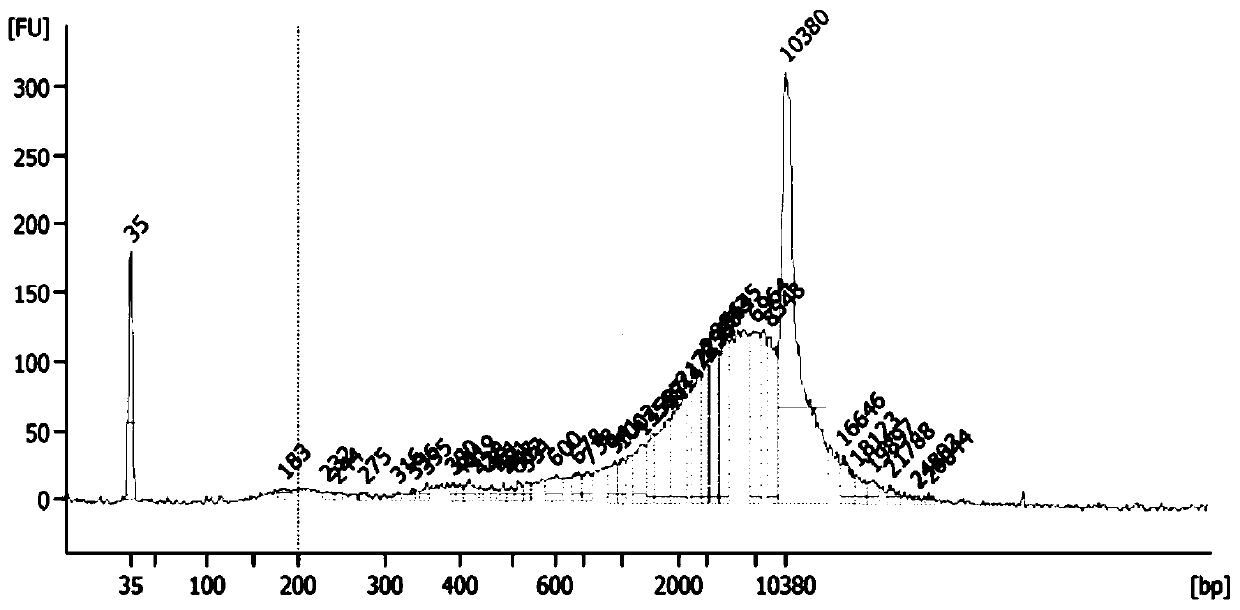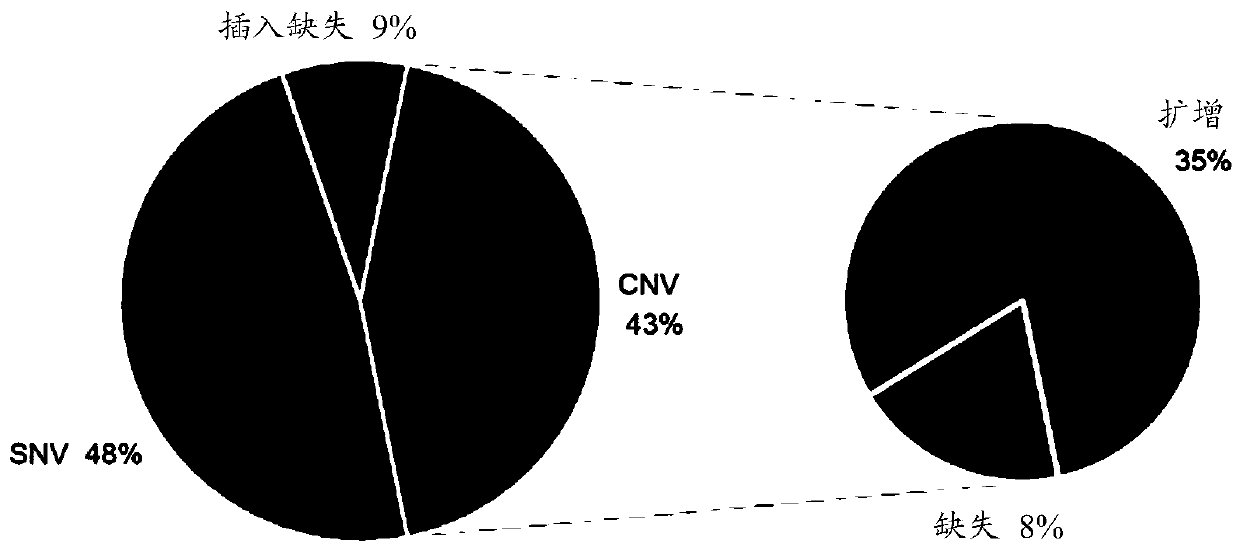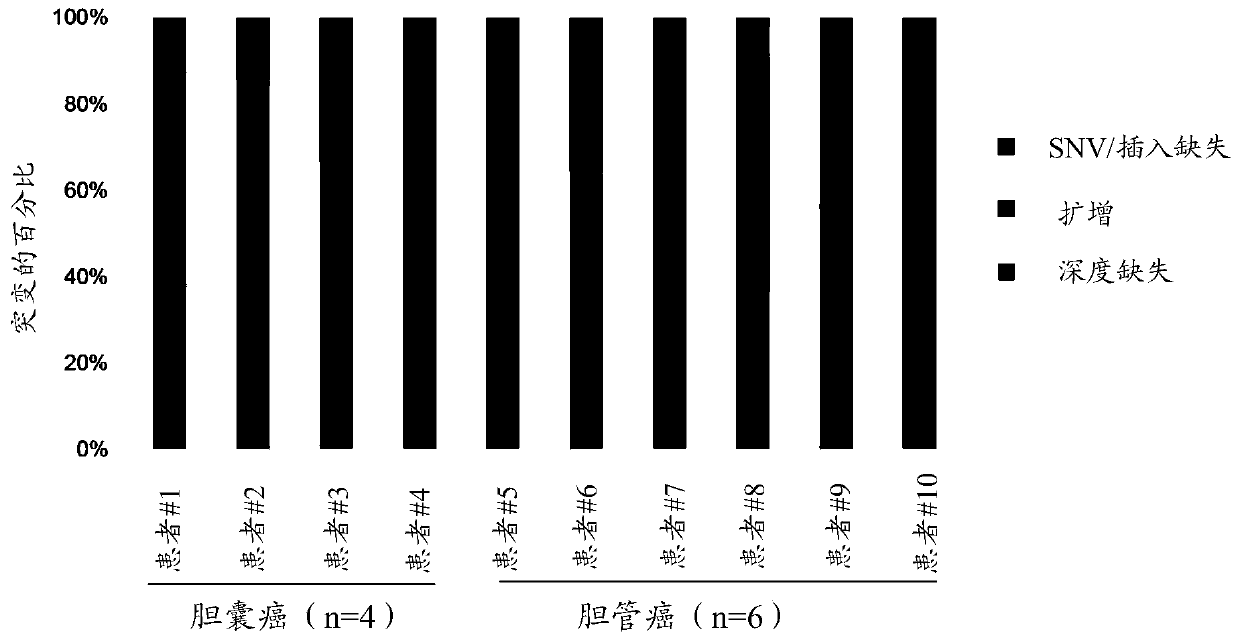Application of biomarkers in bile in diagnosis of malignant tumor
A biomarker, bile technology, applied in the application of tools, the field of reagents for detecting biomarkers in bile, can solve the problems of wide application impact, malignant tumor metastasis, lack of verification data, etc., and achieve easy-to-obtain results
- Summary
- Abstract
- Description
- Claims
- Application Information
AI Technical Summary
Problems solved by technology
Method used
Image
Examples
Embodiment 1
[0078] Example 1: Obtaining bile cfDNA
[0079] 1. Sample source:
[0080] 10 BTC patients (4 males, 6 females) were selected, and the specific information is shown in Table 1. The mean age at diagnosis of the 10 BTC patients was 68 years (age range 44-74 years). Four patients had gallbladder cancer and six patients had cholangiocarcinoma (1 intrahepatic, 4 perihilar, and 1 distal). Based on the American Joint Committee on Cancer (AJCC) 7th edition staging system for BTC, 4 patients (40%) were stage II, 3 patients (30%) were stage III, and 3 patients (30%) were stage IV . Percutaneous transhepatic biliary drainage (PTCD) and surgery are considered two different methods of bile extraction. Among the 10 BTC patients, 8 underwent radical resection (R0), and the other 2 underwent R1 and R2 resection.
[0081] Table 1
[0082]
[0083]
[0084] 2. Extract cfDNA:
[0085] A 4-μm-thick paraffin-embedded tissue sample was selected for genomic DNA extraction. DNA was extra...
Embodiment 2
[0086] Example 2: Size distribution of bile cfDNA fragments
[0087] Example 1 Determination of the concentration of extracted bile cfDNA Qubit dsDNA HS Kit (Life Technologies) was used to measure the size and distribution of cfDNA fragments using an Agilent 2100 bioanalyzer (Agilent Technologies, Palo Alto, CA, USA).
[0088] The electropherograms showed that the 10 samples from the above BTC patients all had a similar distribution, which was cut to about 6000bp (eg figure 1 shown). This result suggests that long DNA fragments are more prevalent in bile cfDNA, which is inconsistent with the findings in plasma cfDNA.
Embodiment 3
[0089] Example 3: Mutation of bile cfDNA fragments in BTC patients
[0090] The bile cfDNA extracted in Example 1 was sequenced using the targeted deep sequencing platform (which can simultaneously detect SNVs, indels, and CNVs) of Shanghai 3D Medical Testing Co., Ltd., and a set of 150 tumor-related genes were detected.
[0091] For the evaluation of bile cfDNA samples, unique identifiers were used to capture sequencing, and the targeted deep sequencing platform of Shanghai Roadside Medical Laboratory Co., Ltd. (which can simultaneously detect SNVs, indels, and CNVs) was used to establish variation profiles. 150 tumor-related genes were detected in the bile sample, and the bile cfDNA sample extracted in Example 1 was interrupted with a sonicator (Covaris S2Sonolab, Covaris, Woburn, MA, USA) before sequencing, so that the cfDNA fragments were distributed between 200bp-400bp. The cut-off value of allelic mutation frequency in bile cfDNA samples was ≥0.001.
[0092] The average...
PUM
 Login to View More
Login to View More Abstract
Description
Claims
Application Information
 Login to View More
Login to View More - R&D
- Intellectual Property
- Life Sciences
- Materials
- Tech Scout
- Unparalleled Data Quality
- Higher Quality Content
- 60% Fewer Hallucinations
Browse by: Latest US Patents, China's latest patents, Technical Efficacy Thesaurus, Application Domain, Technology Topic, Popular Technical Reports.
© 2025 PatSnap. All rights reserved.Legal|Privacy policy|Modern Slavery Act Transparency Statement|Sitemap|About US| Contact US: help@patsnap.com



